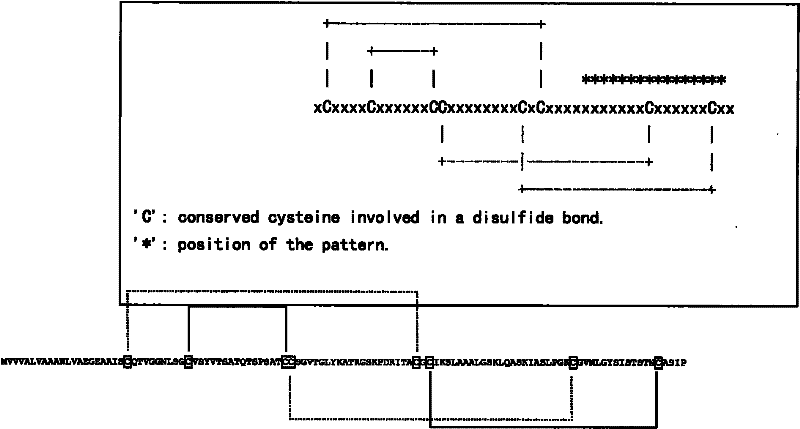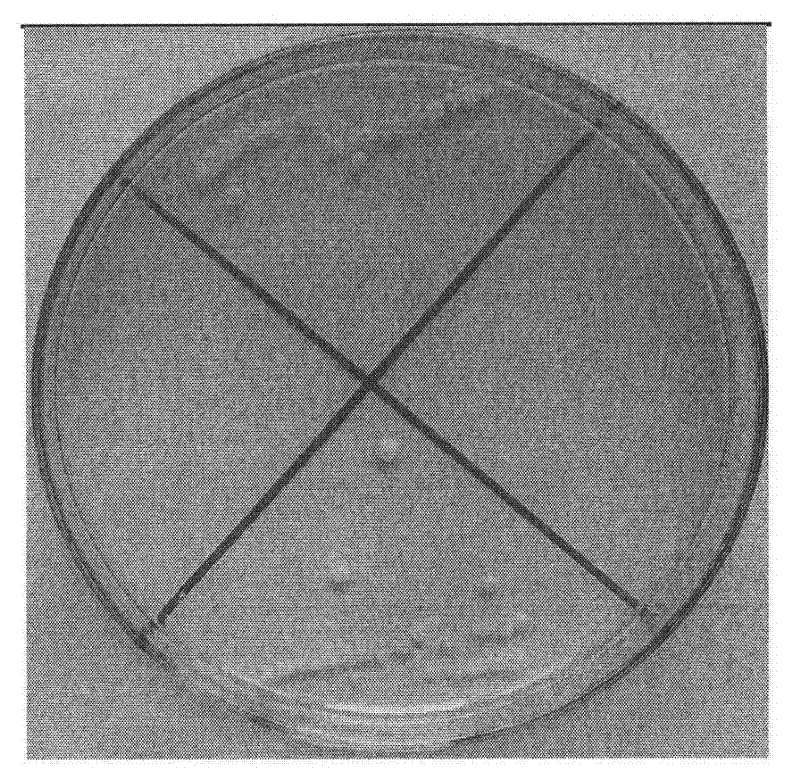Protein related with arsenic resistance of plants, and coding gene and application thereof
A technology that encodes genes and proteins, applied in plant gene improvement, application, plant peptides, etc., can solve the problems of no research reports
- Summary
- Abstract
- Description
- Claims
- Application Information
AI Technical Summary
Problems solved by technology
Method used
Image
Examples
Embodiment 1
[0039] Embodiment 1, discovery of gene
[0040] 1. Library Construction and Screening
[0041] 1. Extraction of Centipede Grass RNA
[0042] The quality of RNA samples will directly affect the quality of the constructed library and the final screening results, so the RNA extraction process requires strict specifications. Centipede Grass is rich in polyphenols and polysaccharides, and common RNA extraction methods (such as guanidine hydrochloride method, TRIZOL method, etc.) are difficult to obtain high-quality RNA. In order to obtain high-quality Centipede grass RNA, the spores collected from the greenhouse were cultured on the medium of sodium arsenate 2mM for 45 days, and the formed prothallus were subcultured once on the medium of sodium arsenate 2mM for 35 days . Pick well-grown prothallus to extract RNA, and perform ordinary rapid electrophoresis on the extracted RNA, and at the same time, analyze the OD of the sample 260 / 280 And the concentration was measured, the re...
Embodiment 2
[0052] Embodiment 2, the cloning and function analysis of gene
[0053] 1. Gene preparation
[0054] Artificially synthesize the following pair of primers:
[0055] Upstream primer: gacccgggatgatgatgagggcgcg (XmaI site is underlined)
[0056] Downstream primer: cgggatccaggaatcgaggcacag (underlined Bam HI site)
[0057] With the cDNA (obtained by reverse transcription of the extracted RNA) of Grass centipede (the public can be purchased from Bozhou Baohua Pharmaceutical Co., Ltd.) as a template, the above-mentioned pair of primers are used to carry out PCR amplification, and the result is a 412bp amplified product ( with enzyme cleavage sites).
[0058] 2. Functional analysis of genes
[0059] 1. Construction of recombinant yeast expression vector
[0060] After the amplified product of the above step 1 was digested with XmaI and BamHI, it was digested with the yeast overexpression vector pFL61 (available from ATCC Company, ATCC Number: 77215 TM ) were connected to constr...
PUM
| Property | Measurement | Unit |
|---|---|---|
| Molecular weight | aaaaa | aaaaa |
Abstract
Description
Claims
Application Information
 Login to View More
Login to View More - R&D
- Intellectual Property
- Life Sciences
- Materials
- Tech Scout
- Unparalleled Data Quality
- Higher Quality Content
- 60% Fewer Hallucinations
Browse by: Latest US Patents, China's latest patents, Technical Efficacy Thesaurus, Application Domain, Technology Topic, Popular Technical Reports.
© 2025 PatSnap. All rights reserved.Legal|Privacy policy|Modern Slavery Act Transparency Statement|Sitemap|About US| Contact US: help@patsnap.com



